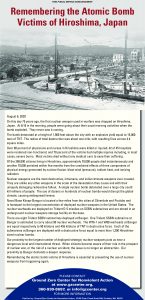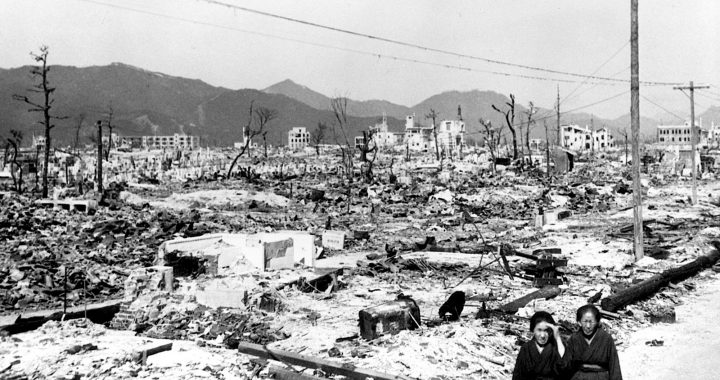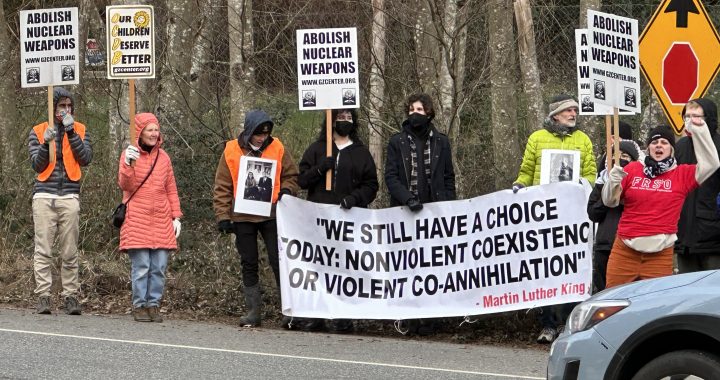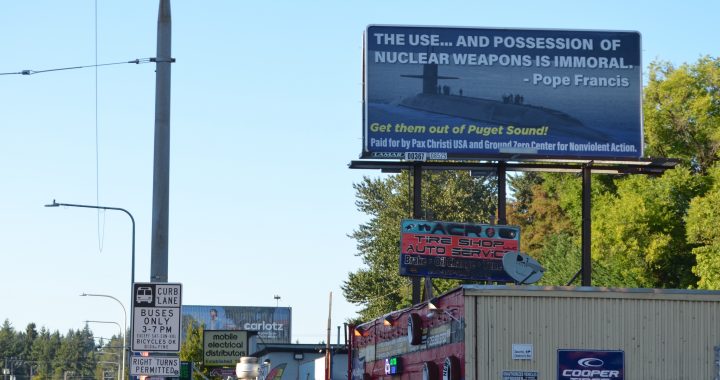August 6, 2020
On this day 75 years ago, the first nuclear weapon used in warfare was dropped on Hiroshima, Japan. At 8:16 in the morning, people were going about their usual morning activities when the bomb exploded.
They never saw it coming.
The bomb detonated at a height of 1,900 feet above the city with an explosive yield equal to 15,000 tons of TNT. The radius of total destruction was about one mile, with resulting fires across

This message ran in the August 6 edition of the Kitsap Sun newspaper, on page 9A, as a “Paid Public Service Announcement.”
4.4 square miles.
Over 90 percent of physicians and nurses in Hiroshima were killed or injured; 42 of 45 hospitals were rendered non-functional; and 70 percent of the victims had multiple injuries including, in most cases, severe burns. Most victims died without any medical care to ease their suffering.
Of the 280,000 citizens living in Hiroshima, approximately 70,000 people died instantaneously and another 70,000 perished within five months from the combined effects of three components of physical energy generated by nuclear fission: blast wind (pressure), radiant heat, and ionizing radiation.
Nuclear weapons are the most destructive, inhumane, and indiscriminate weapons ever created. They are unlike any other weapons in the scale of the devastation they cause and with their uniquely damaging radioactive fallout. A single nuclear bomb detonated over a large city could kill millions of people. The use of dozens or hundreds of nuclear bombs would disrupt the global climate, causing widespread famine.
Naval Base Kitsap-Bangor is located a few miles from the cities of Silverdale and Poulsbo and is homeport to the largest concentration of deployed nuclear weapons in the United States. The nuclear warheads are deployed on Trident D-5 missiles on SSBN submarines and are stored in an underground nuclear weapons storage facility on the base.
There are eight Trident SSBN submarines deployed at Bangor. One Trident SSBN submarine at Bangor is estimated to carry about 90 nuclear warheads. The W76-1 and W88 warheads at Bangor are equal respectively to 90 kilotons and 455 kilotons of TNT in destructive force. Each of the submarines at Bangor are deployed with a destructive force equal to more than 1,200 Hiroshima- sized nuclear bombs.
Our proximity to the largest number of deployed strategic nuclear weapons puts us near a dangerous local and international threat. When citizens become aware of their role in the prospect of nuclear war, or the risk of a nuclear accident, the issue is no longer an abstraction. Our proximity to Bangor demands a deeper response.
Remembering the atomic bomb victims of Hiroshima is essential to preventing the use of nuclear weapons from happening again.
Editor’s Note: Ground Zero Center for Nonviolent Action submitted this message to the Kitsap Sun newspaper, which published it on August 6, 2020 as a “Paid Public Service Announcement.” Click here to see the message as published.




